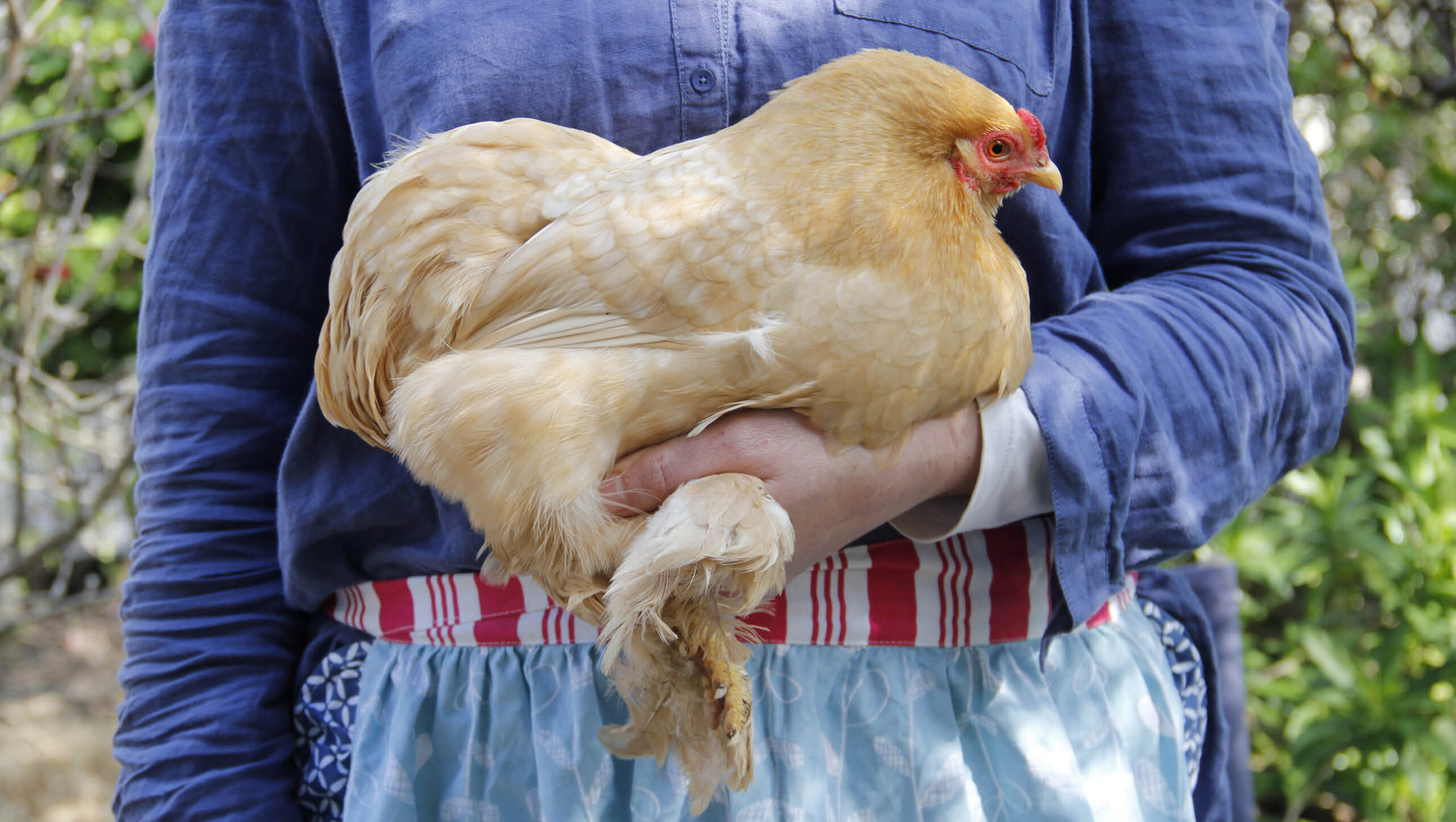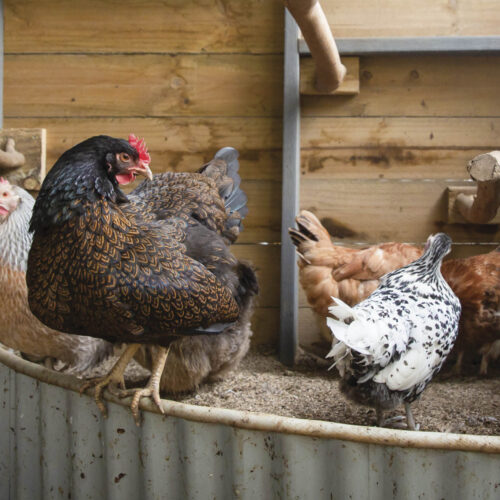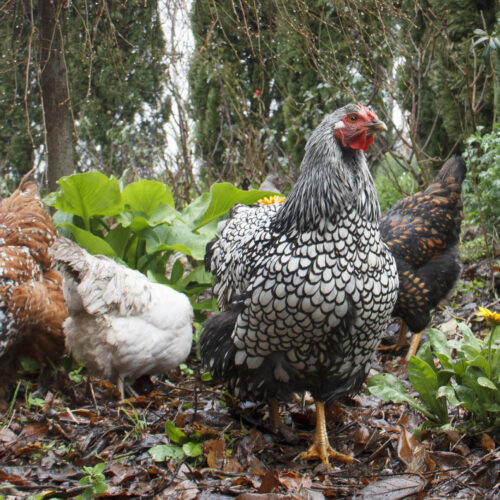How to hold a chook
2022-02-03T02:33:16+11:00
There are all sorts of reasons you may need to hold your hens, such as checking for parasites; Jessamy Miller explains how do it safely for your chooks and you.
There are all sorts of reasons you may wish to pick up your hens; to check for parasites, to move them to another pen, or simply for a cuddle. Happy, unstressed chooks lay more eggs, so it’s worth perfecting the art of the hen hold. Chooks express anxiety by struggling or flapping, but if you hold them correctly, the chook will feel safe and remain calm.
Holding method
Pick up the bird with both hands and position it against your ribs with its back wing tucked in and its head facing the arm of your nondominant hand. Thread the fingers of that hand between the chook’s two legs to hold them secure. With bantams, you can use the thumb to reach up and pin down the bird’s outer wing. Rest its breast on your arm. Pressed gently but firmly against your body, with wings and legs secured, there’s little chance of struggling and the bird feels safe. Your dominant hand remains free to do jobs, inspect the bird for health problems, or just give a reassuring pat. If there’s danger of pecking, just tuck the head under your arm.
This method works with poultry of all sizes and dispositions, and even young people can hold a large rooster without any fuss.

Putting down
When it comes to the dismount, place the chook directly on the ground, using both hands if required. Chooks are likely to struggle when being lowered as they feel insecure, so hold the wings. What you don’t want is the chook getting loose, flying or falling awkwardly, and landing with a bump. This can lead to injuries such as sprained or broken legs, or bruised or punctured feet. It also breaks the bond of trust between you and the bird. Placing the chook so it can walk away calmly is good handling.
Children
I often see children holding chooks in a stranglehold, and when the chook struggles, they naturally tighten their grip. This is an opportunity to teach children a more humane approach. Struggling indicates the chook is no longer comfortable being held and it’s time to end the interaction. Further, squeezing chooks round the middle can cause an egg to break internally, which could prove fatal to the chook. It can also damage tender internal organs. When children are guided to use the preferred holding method, there is no pressure on the soft parts of the chook, and it leads to a more positive experience for everyone.
Catching a chook
It’s well known chooks can run faster than humans over short distances, and are savvy at dodging and weaving. The easiest way to catch one is simply wait until it has roosted at night and remove the bird from the perch. It will be sleepy and relaxed and will save you the effort of the chase.
If you must catch a loose chook during the day, keep your movements calm, so the bird doesn’t panic, and herd the chook rather than chase it, ideally into a shed, garage or fence corner. You should be able to briskly pick her up once she is out of places to run to.
No stress
With this handy hen hold you can inspect your chooks without anyone’s feathers being ruffled!
Jessamy is our resident chook expert has written quite a few articles for us on poultry:






